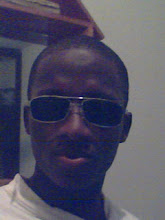Originally By
Contagious Creativity
Coaching and facilitating – two faces of a coin
I’ve been doing facilitation for quite some time and have enjoyed the process so far. Lately I was asked to coach a group in problem solving over a number of visits. I became very interested in this concept even more as it allowed me to monitor the progress of the working group, rather than leave it to them at the end of the facilitation meeting.
Digging deeper into the subject, I read the “Coaching for Performance” by John Whitmore. According to him, “coaching is unlocking a person’s potential to maximize their own performance. It is helping them to learn rather than teaching them”. In a way, isn’t that what facilitation is about? but rather than focus on the individual, it is a group process. facilitation also relies heavily on the group to find their own solutions, and the facilitator’s job is asking the right question, and providing a framework on how to move forward in the process. Using both compliments each other and it enriches the whole experience. A facilitator needs to start with an informational interview with the client prior to facilitation to understand the issue at hand, then the meeting happens, and a follow up could occur.
If the facilitator is an experienced coach (not necessarily certified), then the person can be even better at asking questions, provoking thoughts, bringing awareness to the client and ultimately, the client will be take on the action plan because he/she feels ownership of the solution they came up with as a group (rather than a consultant suggesting it from the outside). In a way, smart consultants can even capitalize on the benefits of using coaching skills in his/her practice.
I will use an example of a creativity model applied by some facilitators called Creative Problem Solving (CPS) and compare it the guidelines that Whitmore suggested for coaching for performance.
in the CPS, a facilitator goes through a number of steps to reach the ultimate goal of finding one or more solutions to the issue at hand. Puccio, Murdock and Mance offer one version of the model by connecting it with some of our thinking skills that we need to make it work. Following are the steps:
1. Assessing the situation (diagnostic thinking)
2. Exploring the vision (visionary thinking)
3. formulating challenges (strategic thinking)
4. exploring ideas (ideational thinking)
5. formulating solutions (evaluative thinking)
6. exploring acceptance (contextual thinking)
7. formulating a plan (tactical thinking)
whole coaching can follow the steps:
1. setting goal (ask questions to get to the ultimate goal the client has (the dream))
2. checking reality (assessing attentudes, tapping emotions, using more descriptive and detailed explanations)
3. exploring options (alternatives, assumptions, what else?, and finally prioritizing)
4. Intentions on making things work (what will you do?) – continue with questions to find the motivation behind each alternative or option and how likely it will happen.
5. conclusion (give action plan and follow up)
see? many already overlap with each other… and can easily be digested together. when I assess the situation as a facilitator, I ask questions, and when I explore the vision, I will ask “how would the situation look like if the issue was resolved?” or what’s your dream solution? this is ultimately setting goals for the client as a coachee and assuming ownership of the problem.
from the other side, it still stands still. when we are exploring options (alternatives and assumptions) we are using ideational thinking in finding all the ways that we can use. a facilitator of the CPS has an advantage here of being exposed to a number of creativity tools that will assist this stage. with many idea generation tools available, the important rule to the game is separating divergent from convergent thinking. so when we are looking for alternatives, we are not judging or even commenting on their fitness or not. we are simply generating ideas.
the conclusion in both is an actual plan and we are using our tactical thinking to find the best fit (now’s the best time for converging our options and choosing the best fit).
when we explore a challenge using, combining our individual and group coaching and facilitation skills, we create a package that will help tackle a problem from all areas, and build on the assets of the inidividual as well as the group who are dealing with it, creating awareness and responsibility for everyone.
I say it’s a winning formula.
Subscribe to:
Post Comments (Atom)




No comments:
Post a Comment